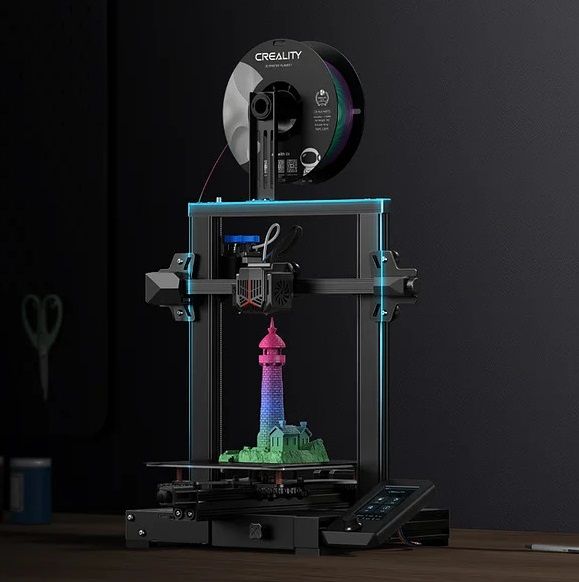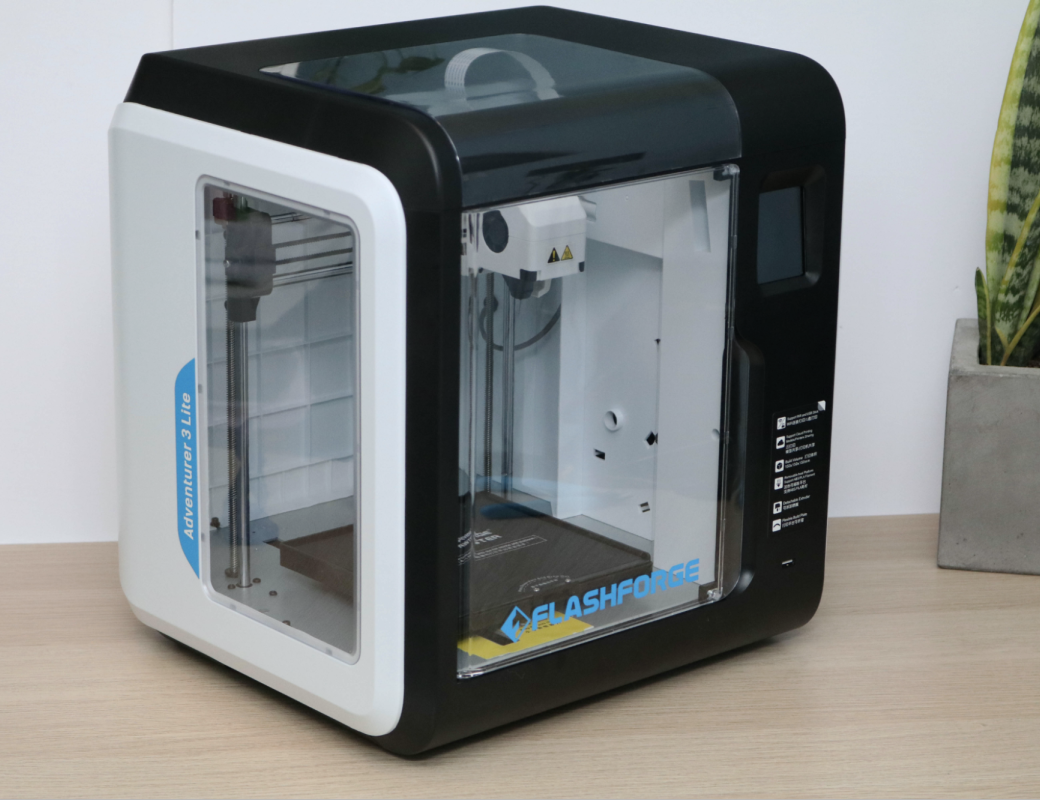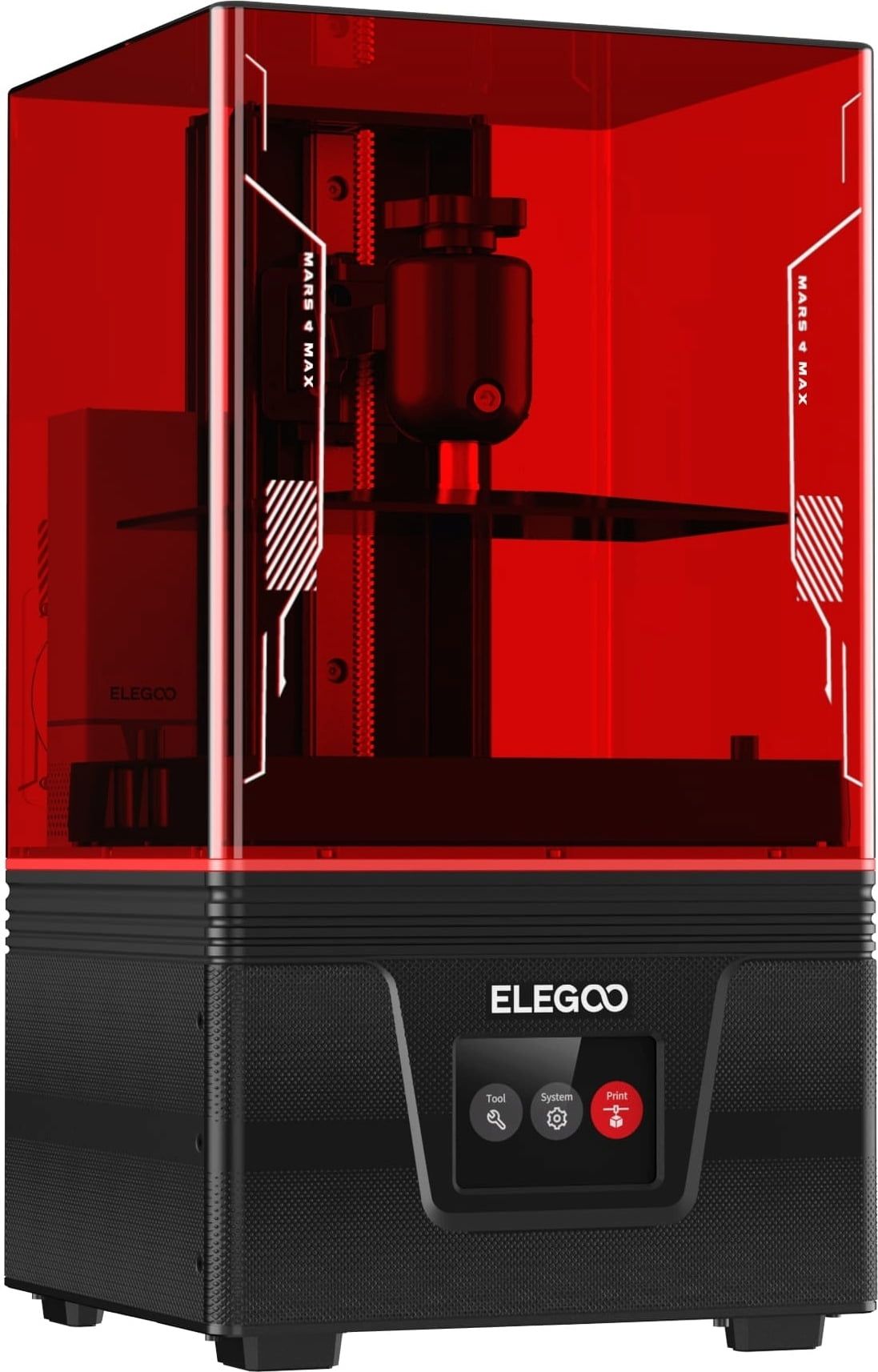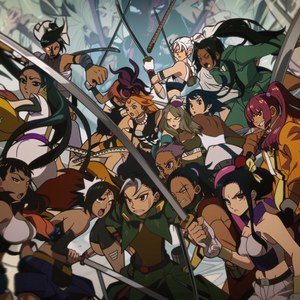In some of the other articles I’ve shared with you, I’ve looked at the sort of things that you can 3D print, what materials to use and in some cases what settings etc. to apply. What I haven’t looked at so far is what actual equipment you might need to get you up and running in the world of 3D printing.
In this article I’ll be looking at a few options for you which will give you the best chance of starting your 3D prints and creating your gaming and Anime related items. The main aspects and criteria I’ll be looking at in terms of the equipment will be:
· Affordability: Cost can play a major factor in what we as consumers choose to buy, but the cheapest option may not be right for you. I’ll therefore take value for money into consideration
· Ease of use: For a beginner, you don’t want something that’s overly complicated and puts you off at the first hurdle. I’ll therefore look at printers and equipment that is specifically aimed at beginners
· Print quality: This may relate to price but if you get a printer that’s easy to use and set up correctly then you’re on the right path to quality.
· Compatibility: I’ll be considering which type of printer you might need for different items. For instance will it be resin or FDM?
· Performance: This will take into consideration print speed, build volume and other factors that will have a bearing on what you can 3D print
So, now’s the time to take the plunge and have a look at what I think are some of the best options for a beginner to start 3D printing. Let’s first take a look at FDM printers.
FDM Printers
FDM (Fused Deposition Modelling) printers, for the uninitiated, are the type you see where filament is used as the printing material. The filament is heated and extruded though a small diameter nozzle which then builds your model in layers. I won’t go into fine detail about how these work as you probably know that already. They have however become hugely popular among the home printing market and prices are more affordable to the average beginner.
Probably the most popular and best selling FDM printers are Creality’s Ender 3 series. The original Ender 3 has sales figures in the millions due to its relatively low cost and ease of use. The Ender 3 has now gone through a number of iterations so I’m going to show you one of the recent models.
Creality Ender 3 V2 Neo

Creality as a company are definitely one of the big hitters in the home 3D printer market. As I’ve said, their Ender range of printers is by far the most used and popular among enthusiasts.
The thing about the Ender 3 is that it’s open source and by that I mean that you can adapt and add upgrades which can be either official Creality or third-party products. You can even print your own adaptations if you wish and there are a lot of designs out there ready to go.
In terms of printing and your needs as a gaming and Anime enthusiast, then you can’t really go wrong with the Ender 3. As I’ve said, you could go for the basic model as a starter but the V2 Neo has a few added extras that make it a better machine.
The build volume is what would be considered the “standard” size for a printer in this category at 220x220x250mm (x,y,z) but that’s plenty big enough to get you started. You’ve also got a better LCD control panel and User Interface (UI), upgraded hot end and extruder, an auto bed levelling system and a more compact and sleek design.
If you can “dial in” the settings well enough on the Neo, then the print quality is great. You can also print larger parts and models than with a resin printer but I’ll be going through that later on. This makes it ideal for printing larger character models and figures as well as bigger aspects of RPG games such as boards and scenery.
· Affordability: Current price is around $230 which is very competitive in this market. This gives you everything you need to get started aside from the filament itself
· Ease of use: Some minor self-assembly is required but its pretty much plug and play. Easy to use but I’d suggest following some online tutorials or joining an online forum for support
· Print quality: If you get the settings right then the print quality is spot on. You can always sand and fill if necessary in post processing
· Compatibility: Great for printing larger models, game parts or gaming accessories
· Performance: Uses multiple material types, can be adapted for higher speed and high temperature printing. Remote printing and monitoring are possible via Creality Cloud App
Flashforge Adventurer 3 Pro 2

Flashforge are another well known manufacturer of both FDM and SLA printers. However, Flashforge FDM printers are a bit different in that they’re all fully enclosed. With printers such as the Ender 3, They’re open frame so you may suffer adverse effects to your prints due to changes in ambient temperatures. You can of course either buy or make an enclosure but with the Flashforge range, they’ve done the heavy lifting in this regard.
The Adventurer 3 Pro 2 is one such printer and comes in a very compact design. I’ve gone again for one of the most recent incarnations of the printer as you can probably guess from the name. The earlier versions are now a bit cheaper but it may be worth spending a bit more to get the best tech.
Build volume is on the smaller size for an FDM printer at 150x150x150mm but then the enhancement in print quality is noticeable. This will obviously limit your printing capacity but should still be large enough to accommodate your general Anime and gaming needs.
The Adventurer isn’t open source in the same way as the Ender and upgrades are therefore limited. However, the print quality is great for an FDM printer so it may be worth spending the extra.
· Affordability: At around $450 it is a bit more expensive for a beginner but the quality may be worth it
· Ease of use: Comes fully assembled and ready to use.An auto calibration sensor is included to make set up easier
· Print quality: As expected for an FDM printer
· Compatibility: Great for smaller prints
· Performance: No upgrades are possible so what you see is what you get. However, print speeds can achieve 300mm/s which would need an upgrade on the Ender and similar printers
These are just two examples among the thousands of FDM printers available on the market. You won’t be disappointed with either of these as a first 3D printer but it’ll then come down to cost and how much more you might want to pay for a bigger or more advanced machine. It will also depend on how easily you can add peripherals and upgrades.
Other notable manufacturers of quality FDM printers include Anycubic, Prusa and Ultimaker. Creality of course have a vast range of printer which also include fully enclosed models so take a look there as well.
SLA/Resin Printers
SLA (Stereolithography) printers are probably more commonly referred to as resin 3D printers and use a liquid polymer which is then subjected to UV light to create the model. Again, I won’t go into exact details of the printing process but I think it’s worth taking a look at how resin printing differs from FDM.
The basic concept is that you’ve got a tray or vat at the bottom of the build chamber which holds the liquid resin. The build plate then lowers and raises into the resin vat at regular intervals and the resin is subjected to UV light to form it into the solid model you’re printing. Don’t ask me exactly how this works and I’m still convinced it’s actually magic rather than science! The results though speak for themselves.
Quality is excellent and as I’ve said, intricate details are clear and easily defined. The only downside I found with resin printing is that it can be messy and there’s a lot of post processing involved. For instance, the resin itself is obviously a liquid so you’ll need to fully clean out the vat if you want to change colour or if you leave the printer unused for any length of time.
Then there’s the washing and curing stages of the model. Once it’s printed, you need to wash off any resin residue using a diluted IPA (Isopropyl Alcohol) solution. You also need to “cure” the model after printing by exposing it to further UV light. You could leave it out in the sun but that’s unpredictable so you’re probably going to need a UV curing box. Alternatively, you can buy a washing and curing unit which looks very similar to your printer and is roughly the same size. This though obviously adds extra cost to the overall project.
Working with resin printers also carries a health risk so always work in a well-ventilated room and use gloves when handling the liquid or uncured resin.
Having said all that I don’t want to put you off as this type of printer is perfect for achieving high detail and intricate parts which is great in terms of printing character models, game pieces and other miniatures. You can of course print larger items but as you’ll see, build volume is limited.
Again, I’m going to suggest a couple of printers that are good starter models but there are many more to look at if you want to do some further research.
Let’s start with Creality again though.
Creality HALOT-ONE

This is a great entry level resin printer and ideal for those who may have experience with FDM printing but want to change printing media.
As with most resin printers, the design is pretty much locked in to being an upright rectangular shape with the machinery and control panel at the bottom and a removable UV shielding cover at the top. Set up is easy and just requires some calibration to get the print bed level. You shouldn’t have to do this as often as with an FDM printer though.
Build volume is much smaller than with the standard FDM printers and with the Halot One its 127x80x160mm (x,y,z). This does though still give you great scope for creating quality items related to the fields of Anime and gaming.
· Affordability: Usually retails at around $290 but you can always get deals and Creality are currently selling them for $145. You will though need the extras I mentioned such as a washing and curing station etc.
· Ease of use: Really easy to set up but quite involved for the whole print process
· Print quality: Results are excellent and way better than with FDM printing
· Compatibility: Perfect for miniatures and other Anime and gaming items
· Performance: Prints are fairly quick and as long as everything is set up correctly and maintained, performance is great

Elegoo are another major player in the world of 3D printing and although they do make FDM printers, they’re reputation has been built on the quality of their resin machines.
All their ranges are named after planets so you have the Neptune range of FDM printers and the Mars, Saturn and Jupiter resin models. I’m going to talk about one of the Mars range though as that’s where the printers aimed more at the beginner lie.
There is a Mars printer which is very similar to the Halot One in spec and price etc, so I’ve decided to show you the slightly bigger and slightly more expensive version as a comparison.
The Mars 4 Max is as you might imagine, a bit bigger in terms of build volume than the standard Mars printer. In fact the build volume is 150x122,4x195.84mm (x,y,z) so you can see the difference immediately. The good thing is though, even with that increased volume, you don’t lose any of the quality or detail that you’d expect from a resin printer.
You can also compare resin printer output quality by the resolution of the print screen. Obviously you can see that the Mars has a 6K mono LCD screen whereas the Halot One has a 2K screen. This will give better definition, printing speed and accuracy to the finished model.
Of course you need to follow all the same processes as with any resin printer in terms of washing, curing and the safety aspects. The good thing though is that you only need one “set” of post processing equipment even if you decide down the line to have several resin printers in your stable.
· Affordability: At around $300 its double that of the next stage down but you’re getting better quality and bigger build volume
· Ease of use: As with any resin printer, easy to set up and use but post processing can be tricky
· Print quality: Again, results are excellent and way better than with FDM printing. You also have a step up again in terms of quality from the Halot One
· Compatibility: Perfect for miniatures and other Anime and gaming items and its possible to print even larger items
· Performance: Print speed is great and an improvement over lower end models
Other Considerations
As I’ve mentioned, there are other items that you can add to your printing set up such as washing and curing stations for your resin printer or enclosures and upgrades for FDM. There are a few other things you might need to get you started and not all of them will cost you money.
Slicer Software
A slicer is what prepares your 3D file so that it can be read and processed by your printer. This is therefore an essential part of any 3D printing set up.
Most slicers are free and some like Cura for instance are open source so can be developed and personalised by users and manufacturers. Cura works best with FDM printers but there are other options like Creality Print which uses Cura as its template.
In terms of resin printers, Lychee and ChiTuBox stand out as the best slicer options but again, Creality have their own version called Halot Box for use with their resin range.
You’ll find that in both cases, you can pretty much use any slicer with any printer so the choice is down to you.
Design Software
I’ve mentioned this in other articles and its not something that you need right at the start of your printing life but certainly worth looking at further down the line. There are a few free options which I’d always recommend such as Tinkercad, Blender and Fusion 360. These are all free to use and except for Tinkercad, you can even choose to pay for more advanced versions if you wish.
Software like this will allow you to express your creative side and 3D print unique items that are all your own work.
Tools, materials and spares
Most printers will come with a basic tool kit which comprises most of the things you’ll need to clean, repair and maintain your printer. You could though invest in additional cutters or scrapers just in case.
In terms of materials, obviously you’ll need filament for the FDM printers and resin for well, the resin! Which materials you buy will be dependent on what you want to print but it’s a good idea to be kitted out with at least a couple of rolls or bottles before you start.
Spares are also an essential for any beginner in my opinion. Things such as replacement nozzles are probable all you’ll need to begin with but as you go on, you’ll find you might need to replace a few items from either damage or wear and tear. This shouldn’t be the case with resin printers but certainly with FDM.
I find the best way to cover this is if something breaks or needs replacing like say, a thermistor wire on your FDM printer. Instead of buying one buy two or three at a time so you’ve always got backup. They usually come in packs of a few anyway so the choice is made for you. I’ve now done this so often that I think I could pretty much replace everything on my printers in one go now.

Hopefully I’ve given you a brief insight into what you’ll need to get you started in the world of 3D printing. There are of course many choices to make in terms of printer but the ones I’ve mentioned are certainly worth a look.
Of course, as with any technology, things are constantly changing so there are more printers coming onto the market almost on a daily basis it seems. There are also advancements in the peripherals you can buy to aid or enhance your printing experience so check those out as well.
Really though, once you’ve got a 3D printer, some software and some materials then you’re good to go. Where you decide to go with it is your choice but hopefully the main thing you’ll get from it is enjoyment.











Member discussion